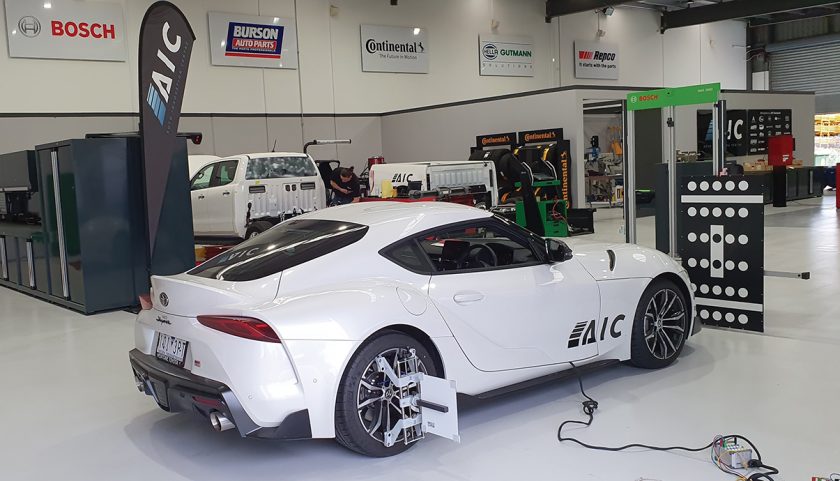
Are you Educating your Customers on ADAS?
Consumers are concerningly confused when it comes to this important technology.
Advanced Driver Assistance Systems (ADAS) help drivers avoid on-road collisions by supporting the driver to make safe choices, alerting the driver to potential danger, and intervening to avoid an accident.
ADAS systems are being progressively included in new models (currently at 60 percent) and ADAS now incorporates a wide range of systems from Adaptive Cruise Control to Forward Collision Warnings.
Further, we expect to see this trend increase over the next two years as we see the effect of Australia’s adoption of Autonomous Emergency Braking and Lane Departure warning as mandatory requirements (ADRs) for new car models.
However, consumers do not appear to be keeping up.
Research data indicates that many don’t seem to fully understand the capabilities or how and when to use ADAS, and even if their vehicle is equipped with some features.
Of course, none of this will be news to you as aftermarket and workshop professionals.
As ADAS features increase in a relatively short time frame, a number of concerning key trends are being brought to the fore, including consumer confusion.
Research from 2020 onwards shows that while consumers are showing a preference for selecting vehicle models with ADAS, many are unsure of all of the features and how these systems affect the day-to-day driving experience.
And the fact that the car companies are using different proprietary names for similar systems is adding to the confusion.
Consumers can see the safety benefits, but international research indicates car owners don’t quite understand the capabilities of these systems (70 percent) and that incessant beeping can lead to abandonment and misuse.
We know the average handover of a new vehicle can last for less than 30 minutes and what is evident is that consumers are leaving the showroom with a brand-new car without a full working understanding of the vehicle capability.
To be fair, loading up the new car handover process with more details will probably lead to information overload and interestingly, this gap in consumer understanding is an opportunity that the aftermarket can fill.
Many commentators are already pointing out the need for the automotive industry to better educate and engage consumers on how to incorporate ADAS technology into the day-to-day driving experience.
Perhaps this is a role that we can play – for instance, as we undertake logbook servicing of these new vehicles, there is an opportunity to educate consumers on the features and to intentionally work in a conversation about ADAS.
Options for messaging here include reminding consumers of their systems.
For example, “your car has lane departure warning, how are you finding the lane keeping assist systems, are you using the systems, and do you find the warning noises to be annoying or beneficial?”
This can lead to discussion and a valuable chance to educate consumers on recalibration.
Independent repair and service workshops are increasingly investing in ADAS equipment and training, and the next logical step is that we should tell customers why their choice of repairer was the best choice to check their safety systems are in proper working order.
Of course, we also need to be investing in the training and equipment required to ensure that this is a true statement.
While ADAS features on a whole are far from brand new – ESC and traction control were introduced last century after all – these systems have evolved.
Car makers are bringing out vehicles equipped with more and more varying ranges of advanced technologies and their prevalence can be expected to grow as more innovations in technology are uncovered.
As such, this is the right time for the independent aftermarket to work together to support consumer awareness that we have the training and the technology to ensure their ADAS technology continues to operate within the required operating parameters.
There is also another concerning trend we can expect to see, and the early signs are already here.
That concern is that we are experiencing some subtle public messaging from the car industry implying you can only trust an authorised repairer to service an ADAS-equipped vehicle.
This is clearly not true because Australia’s Motor Vehicle Information Sharing Law mandates the sharing of repair information, but consumers may not know this.
The good news is that the perception of our capability is largely in our own hands.
A clean workshop, knowledgeable staff, state-of-the-art equipment, and constant updates on the progress of the repair can influence perceptions of capability.
Similarly, engaging in an ADAS conversation, ‘pulling back the curtain’ and educating them does a similar job.
It reinforces the message that our industry is ahead of the curve, supporting consumer choice and playing a vital role in keeping our customers and their families safe while enhancing their experiences of driving a sophisticated computer on wheels.
Lesley Yates – AAAA Director of Government Relations and Advocacy
This article was originally published in the March Australian Automotive Aftermarket Magazine
